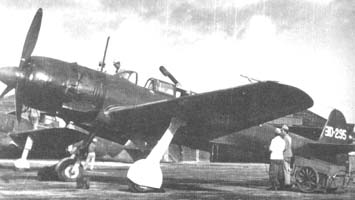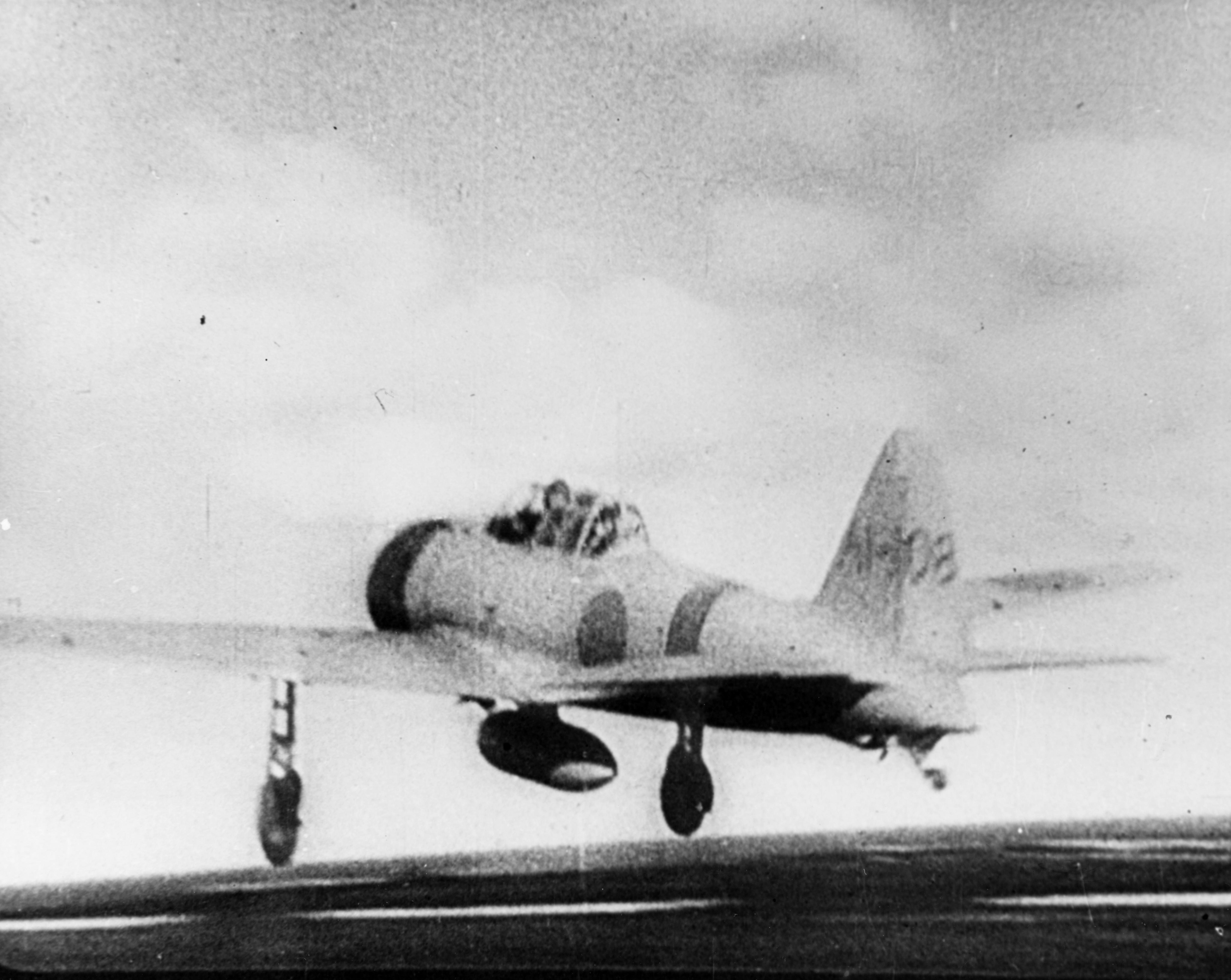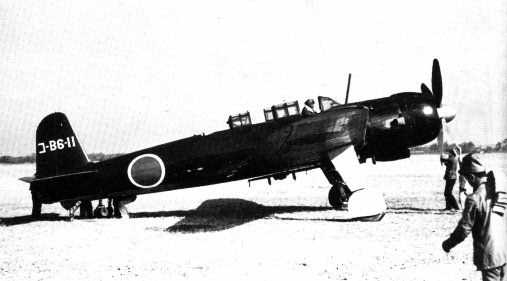|
701st Naval Air Group
The was an aircraft and airbase garrison unit of the Imperial Japanese Navy (IJN) during the Pacific campaign of World War II. First generation (ex-Mihoro Naval Air Group) Structure *Higher unit ** 22nd Air Flotilla (1 November 1942–15 March 1943, dissolved.) *Commanding officers **Capt. Yamada Yutaka Alumni Association of 705th Naval Air group, p. 61. (49) - 1 November 1942 - 15 March 1943 Second Generation (ex-Toyohashi Naval Air Group) Structure *Higher unit ** 51st Carrier Division (20 February 1944–14 November 1944) **25th Air Flotilla (15 November 1944–9 February 1945) ** 5th Air Fleet (10 February 1945–postwar) *Lower unit **305th Fighter Squadron (20 March 1945–5 May 1945) **311th Fighter Squadron (5 March 1945–24 May 1945) **5th Attack Squadron (5 January 1945–9 February 1945) **102nd Attack Squadron (1 October 1944–9 December 1944) **103rd Attack Squadron (1 October 1944–postwar.) **105th Attack Squadron (10 Februar ... [...More Info...] [...Related Items...] OR: [Wikipedia] [Google] [Baidu] |
Mitsubishi G4M
The Mitsubishi G4M was a twin-engine, land-based medium bomber formerly manufactured by the Mitsubishi Aircraft Company, a part of Mitsubishi Heavy Industries, and operated by the Imperial Japanese Navy from 1940 to 1945. Its official designation is and was commonly referred to by Japanese Navy pilots as due to the cylindrical shape of its fuselage and its penchant for igniting after a hit. The Allied reporting name was "Betty". Designed to a strict specification to succeed the Mitsubishi G3M already in service, the G4M boasted very good performance and excellent range and was considered the best land-based naval bomber at the time. This was achieved by its structural lightness and an almost total lack of protection for the crew, with no armor plating or self-sealing fuel tanks. The G4M was officially adopted on 2 April 1941 but the aforementioned problems would prove to be a severe drawback, often suffering heavy losses; Allied fighter pilots nicknamed the G4M "The Flying L ... [...More Info...] [...Related Items...] OR: [Wikipedia] [Google] [Baidu] |
Kokubu, Kagoshima
was a Cities of Japan, city located in Kagoshima Prefecture, Japan. The city was founded on February 1, 1955. As of 2003, the city had an estimated population of 55,237 and the population density, density of 450.88 persons per km². The total area was 122.51 km². On November 7, 2005, Kobuku, along with the towns of Kirishima, Kagoshima (town), Kirishima (former), Fukuyama, Kagoshima, Fukuyama, Hayato, Kagoshima, Hayato, Makizono, Kagoshima, Makizono, Mizobe, Kagoshima, Mizobe and Yokogawa, Kagoshima, Yokogawa (all from Aira District, Kagoshima, Aira District), was merged to create the city of Kirishima, Kagoshima, Kirishima and no longer exists as an independent Municipalities of Japan, municipality. External links Official website of Kirishima Dissolved municipalities of Kagoshima Prefecture Japan Self-Defense Forces Kyocera {{Kagoshima-geo-stub ... [...More Info...] [...Related Items...] OR: [Wikipedia] [Google] [Baidu] |
Philippines Campaign (1944–1945)
Philippines campaign may refer to various military campaigns that have been fought in the Philippine Islands, including: Spanish colonial period (1565–1898) *Numerous revolts against Spain during the Spanish colonial period; see Philippine revolts against Spain and Military history of the Philippines#Spanish colonial period (1565–1898) *Various actions fought in the Philippines during the Eighty Years' War between Spain and the Netherlands; see "Eighty Years War (1568–1648)" at Military history of the Philippines#Spanish colonial period (1565–1898) *The Limahong Campaign (1573–1575), an attempt by the Chinese pirate Limahong to seize northern Luzon from Spanish authorities *Various actions fought in the Philippines during the Seven Years War (1756–1763) between European powers; see Military history of the Philippines#Spanish colonial period (1565–1898) and Seven Years' War#Other Continents *The Philippine Revolution (1896–1898), called the "Tagalog Revolt" by th ... [...More Info...] [...Related Items...] OR: [Wikipedia] [Google] [Baidu] |
Formosa Air Battle
The Formosa Air Battle ( ja, 台湾沖航空戦, translation=Battle of the Taiwan Sea, ), 12–16 October 1944, was a series of large-scale aerial engagements between carrier air groups of the United States Navy Fast Carrier Task Force (TF38) and Japanese land-based air forces of the Imperial Japanese Navy (IJN) and Imperial Japanese Army (IJA). The battle consisted of American air raids against Japanese military installations on Formosa (Taiwan) during the day and Japanese air attacks at night against American ships. Japanese losses exceeded 300 planes destroyed in the air, while American losses amounted to fewer than 100 aircraft destroyed and two cruisers damaged. This outcome effectively deprived the Japanese Navy's Combined Fleet of air cover for future operations, which proved decisive during the Battle of Leyte Gulf later in October. Background Japanese strategic plans for a decisive battle with the U.S. fleet were already established by September 1944. Anticipating the va ... [...More Info...] [...Related Items...] OR: [Wikipedia] [Google] [Baidu] |
Battle Of Rennell Island
The took place on 29–30 January 1943. It was the last major naval engagement between the United States Navy and the Imperial Japanese Navy during the Guadalcanal Campaign of World War II. It occurred in the South Pacific between Rennell Island and Guadalcanal in the southern Solomon Islands. In the battle, Japanese land-based torpedo bombers, seeking to provide protection for the impending evacuation of Japanese forces from Guadalcanal, made several attacks over two days on U.S. warships operating as a task force south of Rennell Island. In addition to approaching Guadalcanal with the objective of engaging any Japanese ships that might come into range, the U.S. task force was protecting an Allied transport ship convoy carrying replacement troops there. As a result of the Japanese air attacks on the task force, one U.S. heavy cruiser was sunk, a destroyer was heavily damaged, and the rest of the U.S. task force was forced to retreat from the southern Solomons area. Partly ... [...More Info...] [...Related Items...] OR: [Wikipedia] [Google] [Baidu] |
New Guinea Campaign
The New Guinea campaign of the Pacific War lasted from January 1942 until the end of the war in August 1945. During the initial phase in early 1942, the Empire of Japan invaded the Australian-administered Mandated Territory of New Guinea (23 January) and the Australian Territory of Papua (21 July) and overran western New Guinea (beginning 29/30 March), which was a part of the Netherlands East Indies. During the second phase, lasting from late 1942 until the Japanese surrender, the Allies—consisting primarily of Australian forces—cleared the Japanese first from Papua, then the Mandate and finally from the Dutch colony. The campaign resulted in a crushing defeat and heavy losses for the Empire of Japan. As in most Pacific War campaigns, disease and starvation claimed more Japanese lives than enemy action. Most Japanese troops never even came into contact with Allied forces, and were instead simply cut off and subjected to an effective blockade by Allied naval forces. Garrison ... [...More Info...] [...Related Items...] OR: [Wikipedia] [Google] [Baidu] |
World War II
World War II or the Second World War, often abbreviated as WWII or WW2, was a world war that lasted from 1939 to 1945. It involved the vast majority of the world's countries—including all of the great powers—forming two opposing military alliances: the Allies and the Axis powers. World War II was a total war that directly involved more than 100 million personnel from more than 30 countries. The major participants in the war threw their entire economic, industrial, and scientific capabilities behind the war effort, blurring the distinction between civilian and military resources. Aircraft played a major role in the conflict, enabling the strategic bombing of population centres and deploying the only two nuclear weapons ever used in war. World War II was by far the deadliest conflict in human history; it resulted in 70 to 85 million fatalities, mostly among civilians. Tens of millions died due to genocides (including the Holocaust), starvation, ma ... [...More Info...] [...Related Items...] OR: [Wikipedia] [Google] [Baidu] |
Nakajima C6N
The Nakajima C6N ''Saiun'' (彩雲, "Iridescent Cloud") was a carrier-based reconnaissance aircraft used by the Imperial Japanese Navy Air Service in World War II. Advanced for its time, it was the fastest carrier-based aircraft put into service by Japan during the war. The Allied reporting name was ''Myrt''. Development and design The C6N originated from a 1942 Imperial Japanese Navy specification for a carrier-based reconnaissance plane with a top speed of 350 knots (650 km/h) at 6,000 m and range of 2,500 nautical miles (4,960 km).Francillon 1970, p. 434. Nakajima's initial proposal, designated N-50, was for a craft with two engines housed in tandem in the fuselage, driving two propellers mounted on the wings. With the development of the class Nakajima Homare engine, the dual powerplant configuration was abandoned and Nakajima decided on a more conventional single-engine layout. Unfortunately the new Homare's power output was less than expected, and the design had to be ... [...More Info...] [...Related Items...] OR: [Wikipedia] [Google] [Baidu] |
Mitsubishi A6M Zero
The Mitsubishi A6M "Zero" is a long-range carrier-based aircraft, carrier-based fighter aircraft formerly manufactured by Mitsubishi Aircraft Company, a part of Mitsubishi Heavy Industries, and was operated by the Imperial Japanese Navy from 1940 to 1945. The A6M was designated as the , or the Mitsubishi A6M Rei-sen. The A6M was usually referred to by its pilots as the ''Reisen'' (, zero fighter), "0" being the last digit of the Japanese calendar#Years, imperial year 2600 (1940) when it entered service with the Imperial Navy. The official World War II Allied names for Japanese aircraft, Allied reporting name was "Zeke", although the name "Zero" (from Type 0) was used colloquially as well. The Zero is considered to have been the most capable carrier-based aircraft, carrier-based fighter in the world when it was introduced early in World War II, combining excellent maneuverability and very long range.Hawks, Chuck"The Best Fighter Planes of World War II" chuckhawks.com. Retrieved: ... [...More Info...] [...Related Items...] OR: [Wikipedia] [Google] [Baidu] |
Nakajima B5N
The Nakajima B5N ( ja, 中島 B5N, Allied reporting name "Kate") was the standard carrier-based torpedo bomber of the Imperial Japanese Navy (IJN) for much of World War II. Although the B5N was substantially faster and more capable than its Allied counterparts, the American Douglas TBD Devastator monoplane (the U.S. Navy's first all-metal, carrier-borne monoplane of any type with retracting gear), and the British Fairey Swordfish and Fairey Albacore torpedo biplanes, it was nearing obsolescence by 1941. Nevertheless, the B5N operated throughout the whole war, due to the delayed development of its successor, the B6N. In the early part of the Pacific War, when flown by well-trained IJN aircrews and as part of well-coordinated attacks, the B5N achieved particular successes at the battles of Pearl Harbor, Coral Sea, Midway, and Santa Cruz Islands. Design and development The B5N was designed by a team led by Katsuji Nakamura in response to a 1935 specification by the Navy for a t ... [...More Info...] [...Related Items...] OR: [Wikipedia] [Google] [Baidu] |
Nakajima B6N
The Nakajima B6N ''Tenzan'' ( ja, 中島 B6N 天山, "Heavenly Mountain", World War II Allied names for Japanese aircraft, Allied reporting name: "Jill") was the Imperial Japanese Navy's standard Aircraft carrier, carrier-borne torpedo bomber during the final years of World War II and the successor to the Nakajima B5N, B5N "Kate". Due to its protracted development, a shortage of experienced pilots and the United States Navy's achievement of air superiority by the time of its introduction, the B6N was never able to fully demonstrate its combat potential. Design and development The B5N carrier torpedo-bomber's weaknesses had shown themselves early in the Second Sino-Japanese War and, as well as updating that aircraft, the Imperial Japanese Navy began seeking a faster longer-ranged replacement. In December 1939 it issued a specification to Nakajima for a Navy Experimental ''14-Shi'' Carrier Attack Aircraft capable of carrying the same external weapons load as the B5N. The new plane ... [...More Info...] [...Related Items...] OR: [Wikipedia] [Google] [Baidu] |
Yokosuka D4Y
The is a two-seat carrier-based dive bomber developed by the Yokosuka Naval Air Technical Arsenal and operated by the Imperial Japanese Navy from 1942 to 1945 during World War II. Development of the aircraft began in 1938. The first D4Y1 was complete in November 1940 and made its maiden flight at Yokosuka the following month. While the aircraft was originally conceived as a dive bomber, the D4Y was used in other roles including reconnaissance, night fighter and special attack (kamikaze). It made its combat debut as a reconnaissance aircraft when two pre-production D4Y1-Cs embarked aboard the Sōryū to take part in the Battle of Midway in 1942. It was not until March 1943 that it was accepted for use as a dive bomber. The early D4Y1 and D4Y2 featured the liquid-cooled Aichi Atsuta engine, a licensed version of the German Daimler-Benz DB 601, while the later D4Y3 and D4Y4 featured the Mitsubishi MK8P Kinsei radial engine. Like many other Japanese aircraft of the time, the D4Y ... [...More Info...] [...Related Items...] OR: [Wikipedia] [Google] [Baidu] |

_launching_a_Grumman_F6F_Hellcat%2C_circa_12_October_1944_(80-G-285037).jpg)

.jpg)





